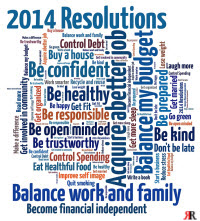 New Year’s resolutions are often forgotten after the first week of the year. It doesn’t matter if the resolution is to lose weight, get a better job or save for retirement – many people forget these resolutions once they come back to their regular routines after the holiday.
New Year’s resolutions are often forgotten after the first week of the year. It doesn’t matter if the resolution is to lose weight, get a better job or save for retirement – many people forget these resolutions once they come back to their regular routines after the holiday.
If your New Year’s resolution is to get a better job, or if you’ve been trying to quit your current job for years, this article is for you.
Before I guide you through the process of switching careers, let me first say this: Shifting careers is not an overnight process.
You need to invest time and resources to make this transition successfully. Yes, moving to a different line of work means working twice as hard during the transition process, but that’s okay. All your hard work will pay off in the end, once you find a fulfilling career in a company that recognizes your worth and pays you well for it.
Let’s Begin…
Step 1: Ask yourself, “Do you really want to go through this?”
Before you resign from your current job, and definitely, before you go back to school to get another degree, I suggest you write down the pros and cons of your current job. This is critical to the next stages in the process, so you don’t get a job with the same aspects you don’t like in your current role.
It’s also important to determine whether what you like in your current role is inherent to the job (i.e., field work or desk work, number crunching, selling, etc.), or if it’s circumstantial, such as an awful boss or unpredictable work schedule. If most of what you like in your current job is circumstantial, then a new job isn’t the answer. Consider career coaching to help you determine other ways of overcoming your problems at work.
Step 2: Start looking.
As you make a list of the pros and cons of your current role, you should also identify which jobs or industries you’d like to pursue. The more choices you have, the better your chances of finding a new job quicker. Don’t just dismiss certain jobs because you don’t have the required experience, you don’t know that for sure. Many companies hire people with no relevant work history. Also, try looking for jobs in other states or even jobs overseas if you don’t mind relocating.
Remember, what’s important is how you present yourself and the story of your professional life, which takes us to step three.
Step 3: Frame your story and career in a way that your target employers will recognize your potential.
If you’re planning to work in an industry very different from what you’re working in now, the job specifics of your current role won’t matter much to your potential employers, so you have to focus on transferable skills, or the skills that will be useful in your future job.
In that light, the previous companies listed in your resume won’t help you that much. Instead of wasting valuable resume real estate, present your resume like an awesome adventure, with exciting points detailing achievements of your career, which then conclude with you looking for a new challenge or adventure, that is to say, a new job.
Step 4: This will take time… Be patient.
After sending your applications, the best you can do is be patient and continue applying for other jobs.
Don’t stress over how the recruiter hasn’t called you yet. Looking for a new job isn’t a race – it’s a marathon. You have to pace yourself for the whole process, so you won’t get tired of it all and lose hope.
For instance, you can dedicate a day to finding job leads then dedicate a day for sending customized resumes and cover letters. After that, you should find time to rest, and by rest, I mean taking time to think of something else besides finding a new job.
I know changing careers is a long and intimidating process, but with patience and hard work, I know you can pull this off. If you need help going through this change, or if you need a new resume for this new job you’re targeting, I am here to help.